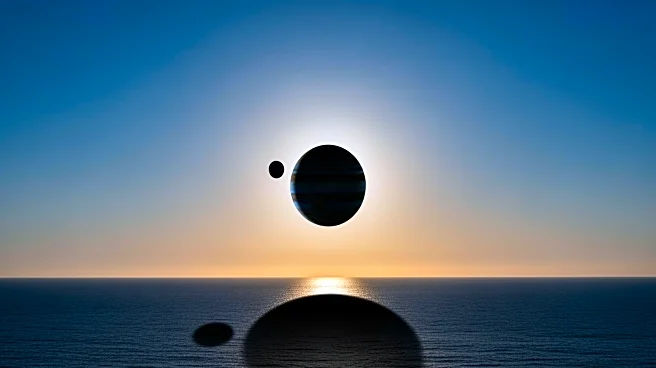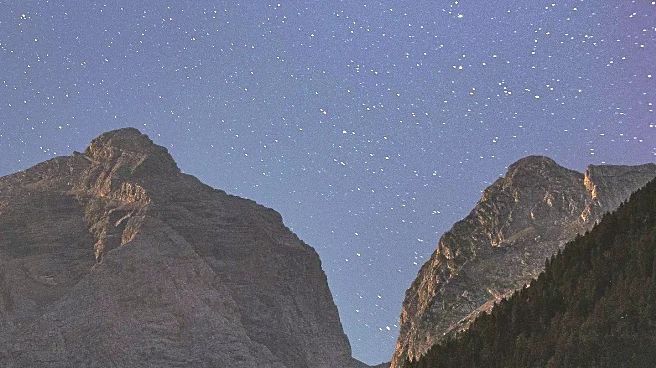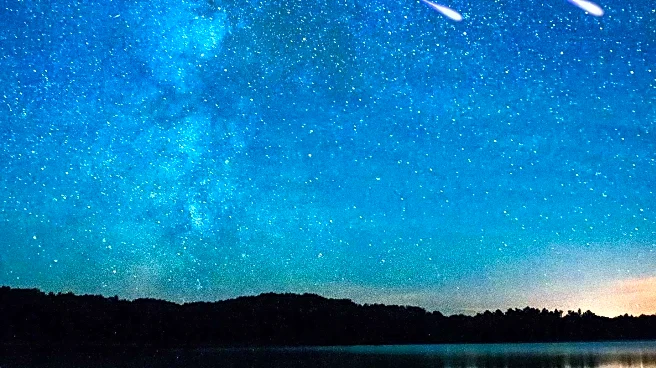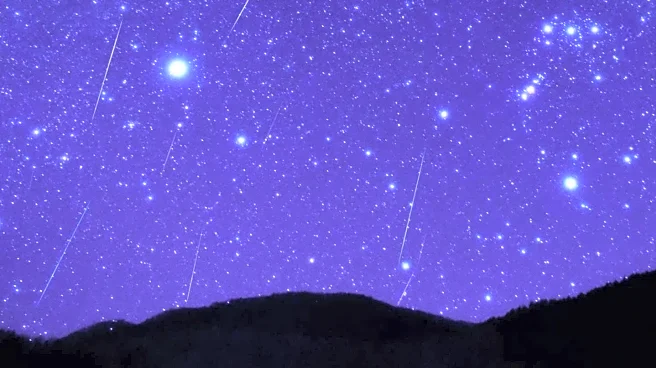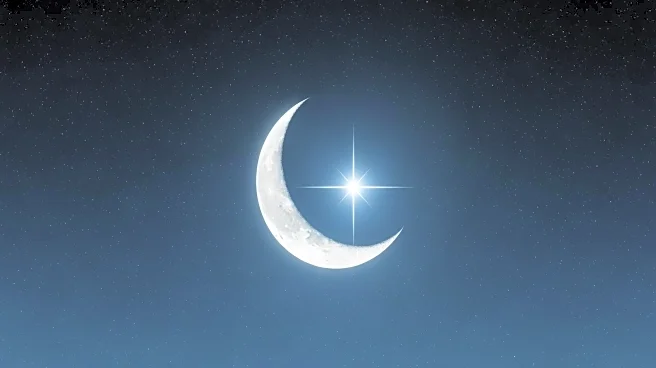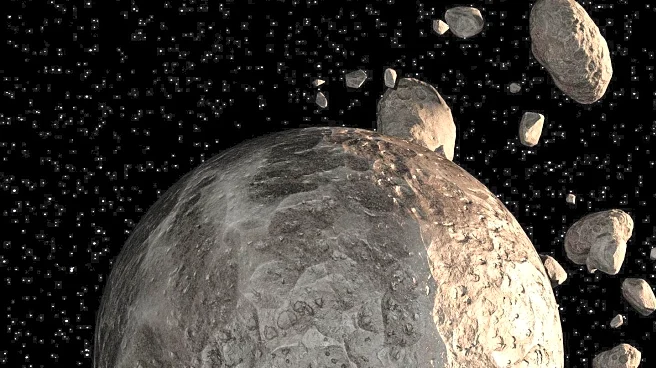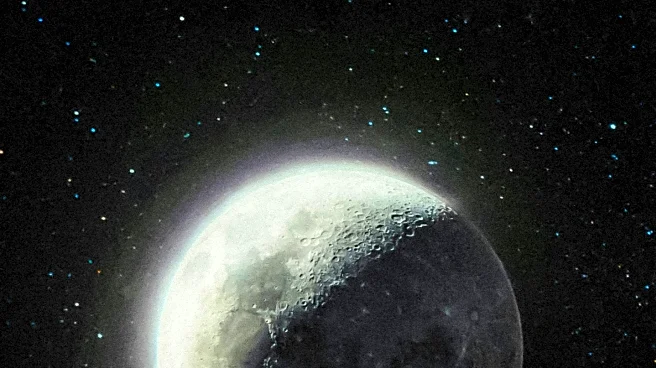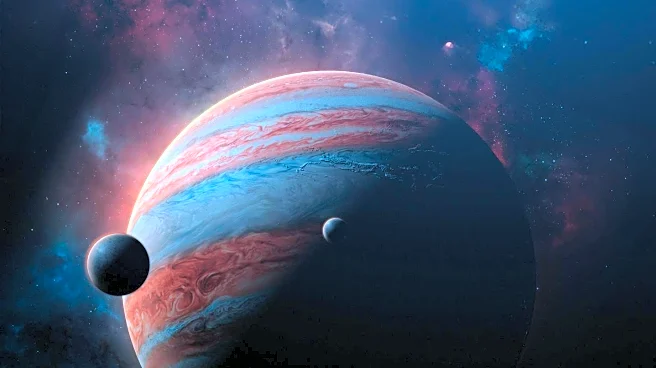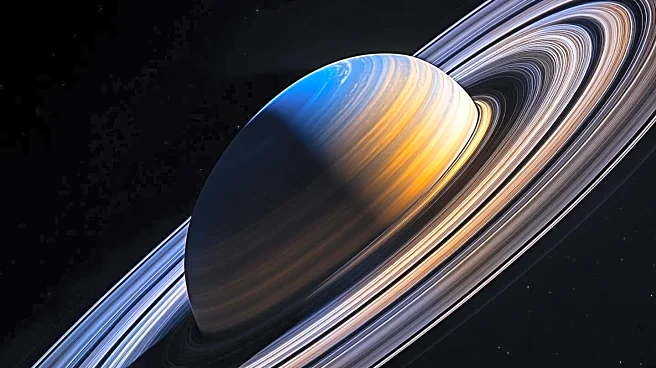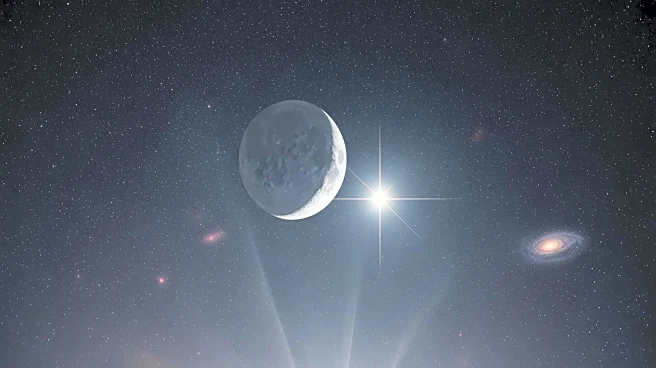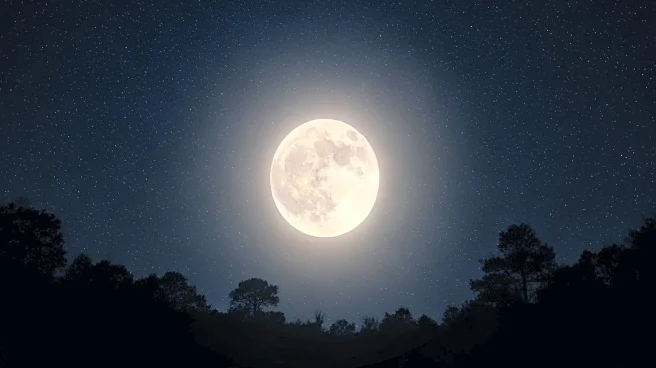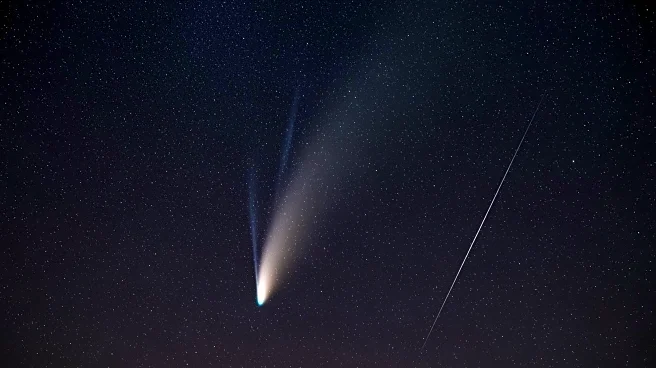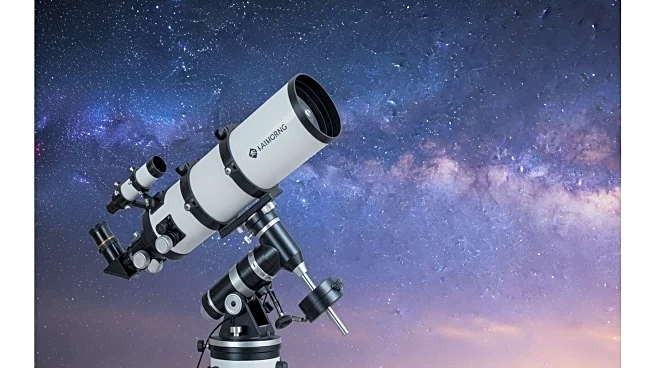What's Happening?
On October 25, 2025, observers on the U.S. West Coast will have the opportunity to witness a rare astronomical event involving Jupiter's moons Io and Europa. Approximately 40 minutes before sunrise, Jupiter will be positioned nearly 80° high in the southern
sky, allowing viewers to see the shadows of Io and Europa transiting across the planet's cloud tops. Io's shadow will appear near the center of Jupiter's disk, while Europa's shadow will begin its transit near the eastern limb. The ingress of Io onto Jupiter's disk is expected at 6:44 A.M. PDT, just before local sunrise. This event provides a unique viewing opportunity for astronomy enthusiasts in the region.
Why It's Important?
This celestial event is significant for both amateur and professional astronomers as it offers a chance to observe the dynamics of Jupiter's moons and their interactions with the planet. Such events help in understanding the orbital mechanics and physical characteristics of these celestial bodies. For the general public, it serves as an engaging way to connect with astronomy and appreciate the complexities of our solar system. The visibility of this event from the U.S. West Coast highlights the region's advantageous position for astronomical observations, potentially inspiring educational activities and public interest in space science.
What's Next?
Following this event, astronomers and enthusiasts may continue to track Jupiter and its moons for further transits and celestial phenomena. Observatories and educational institutions might organize viewing sessions or workshops to capitalize on public interest. Additionally, data collected from such observations can contribute to ongoing research in planetary science and the study of Jupiter's atmospheric conditions.
